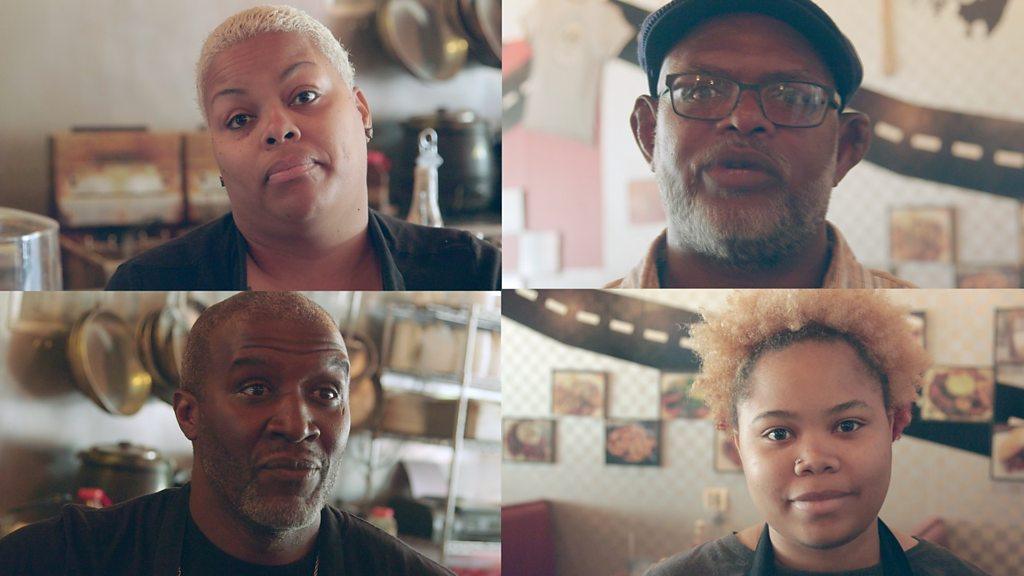Ferguson and Kenosha: How two presidents responded to civil unrest
- Published
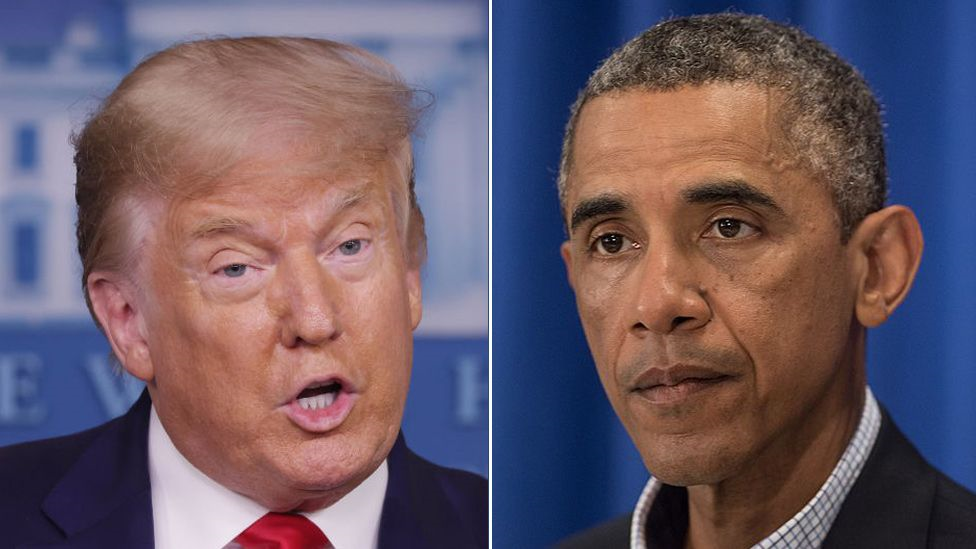
Two cities, two police shootings, two very different presidents. We take a look at how Presidents Barack Obama and Donald Trump handled civil unrest and racial tensions.
Ferguson, Missouri, and Kenosha, Wisconsin, will both have a place in the history books. Both cities have seen massive protests - at times violent - against police brutality and racism, both sparked by the shootings of young, black men by white members of law enforcement.
These events tested both presidents on issues of race, policing and protests. Here's how they reacted.

What happened in Ferguson and Kenosha?
Eighteen year old Michael Brown was shot and killed by a Ferguson police officer on 9 August, 2014.
The exact details of what happened that day remain disputed. We know Officer Darren Wilson encountered Mr Brown in the street around midday; there may have been a scuffle - and three minutes later Mr Brown was dead in the street from at least seven gunshot wounds. Mr Wilson said he shot in self-defence.
His death set off weeks of protests across the US and added momentum to the Black Lives Matter movement.
On 23 August in Kenosha, 29-year-old Jacob Blake was shot seven times in the back by a police officer during an arrest, as he tried to get into a car where his three children were seated. Mr Blake is still recovering in hospital, paralysed from the waist down.
Jacob Blake: Comparing Trump and Biden's Kenosha visits
The incident immediately sparked protests in Kenosha and elsewhere. In Kenosha, the demonstrations at times turned violent - two people were killed during one night of unrest, allegedly by a white pro-police teenager.
What were their first responses?
Five days after Michael Brown was killed, Mr Obama asked America to "take a step back" and think about how to move forward. Urging calm, the president said he'd already directed his justice department and the FBI to investigate Michael Brown's death while guiding local law enforcement on handling demonstrations without "unnecessary escalation".
As he highlighted the "heart-breaking" circumstances of the black teen's death, he also emphasised there was "never an excuse for violence against police" or, likewise, "excessive force against peaceful protest".
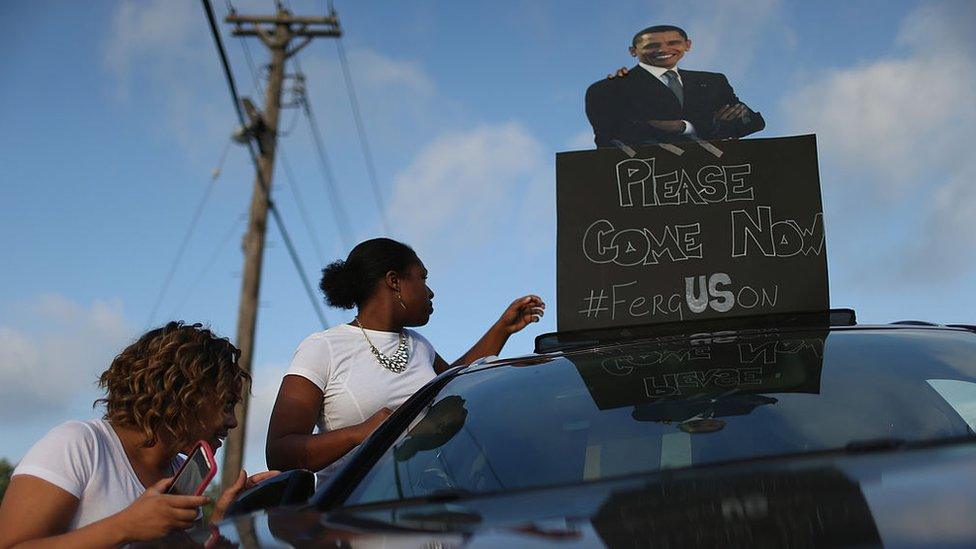
Former president Barack Obama faced some criticism for not visiting Ferguson
Flash-forward to 2020, and another week in late summer.
Five days after the shooting of Jacob Blake, Mr Trump responded to a reporter's question about video of the incident by saying: "It was not a good sight, I didn't like the sight of it, certainly."
Days later, Mr Trump spoke about "bad apples" and rare mistakes among police in an interview with Fox News, remarking: "Shooting a guy in the back many times - I mean couldn't you have done something different? Couldn't you have wrestled him?"
Did they formally address the nation?
We heard from Mr Obama when a grand jury declined to charge the policeman involved in the shooting on 24 November.
Issuing a statement from the White House, he reiterated that now was a time for learning and healing. He acknowledged the country's "legacy of racial discrimination" but also underscored that "there are good people on all sides of this debate, as well as in both Republican and Democratic parties" who want to see reform.
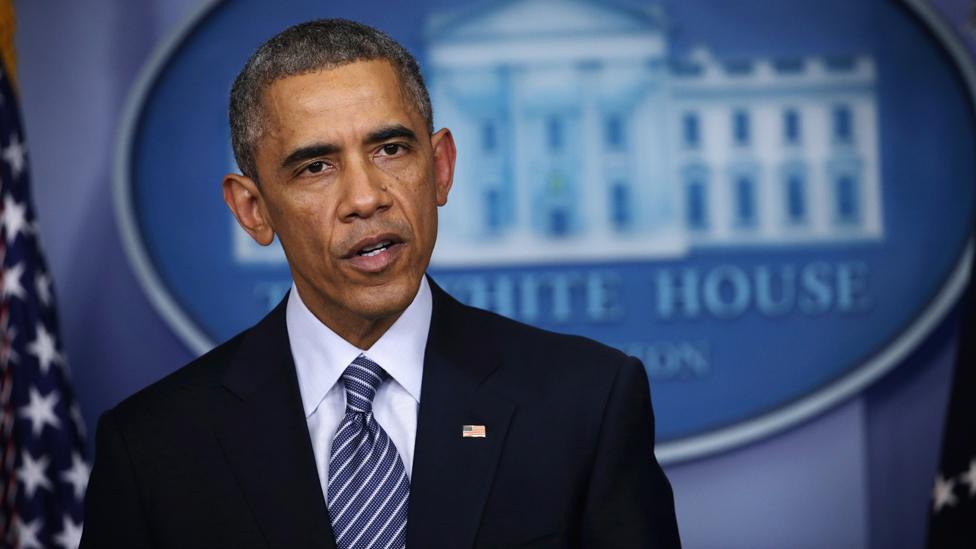
'There are good people on all sides of this debate,' Obama said
Mr Obama said: "Those should be the lessons that we draw from these tragic events."
Mr Trump has not made a formal speech on the Kenosha protests.
He did deliver a speech from the White House in June after George Floyd's death set off massive protests around the country, saying America was "rightly sickened and revolted" by the incident while repeating his mantra of law and order.
Did they visit?
Mr Obama never visited Ferguson, though he'd suggested he might once the situation calmed down. After Attorney General Eric Holder went in his place, some black leaders criticised Mr Obama for handing off his duties as the nation's first black president.
'This isn't new to African Americans'
On 1 September, Mr Trump flew out to Kenosha - despite Wisconsin's governor requesting him to stay away. The president didn't meet Jacob Blake's family, however, since he said they wanted their lawyer to be present, which Mr Trump found "inappropriate".
Instead, Mr Trump spoke to local law enforcement who he said "did such a good job for me".
Did they defend the police?
Yes - both presidents were quick to support law enforcement, but with different nuances.
When two officers were shot in Ferguson, Mr Obama excoriated the "criminals" he said were detracting from the real issues. In his rebuke, he again rehashed the notion of "like-minded, good-spirited people on both sides", saying law enforcement have a "terrifically tough job" even as he noted biases in policing.

Protesters and supporters lined the road as President Donald Trump's motorcade passed on the way to Kenosha
Then in March 2015, Mr Obama defended the findings of his justice department when officials declined to press federal charges against the officer who shot Michael Brown.
"You can't just charge him anyway because what happened was tragic," he said.
As we approach the 2020 election, Mr Trump has branded himself the president of "law and order". He said that while some tragic cases involve "bad cops... in other cases, they choke".
On Twitter, he's heaped praise on National Guard troops and local police as they quell unrest across the states.
Speaking to police in Kenosha on 1 September, Mr Trump said "reckless far-left politicians continue to push the destructive message that our nation and law enforcement are oppressive or racist".
How did they use federal powers?
There are two entities at the centre of this question - the National Guard and federal agents (think FBI and the US Marshals).
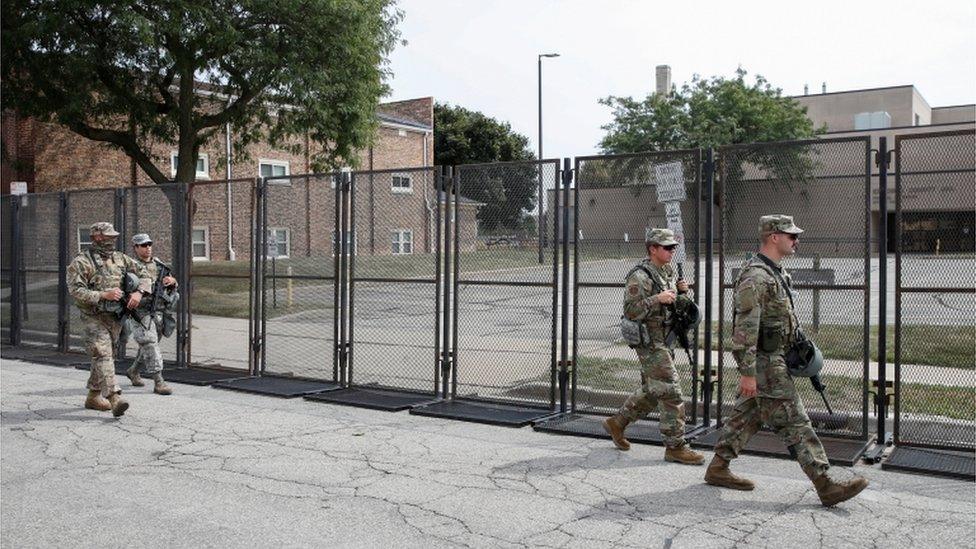
Wisconsin's governor deployed the National Guard and the federal government deployed federal agents
Mr Obama sent FBI agents along with his attorney general to help Ferguson police quell the unrest and investigate the shooting that sparked it all. There were National Guard troops as well - but these were deployed by Missouri's governor, as is customary.
Mr Trump, meanwhile, has been outspoken about his federal powers, brandishing federal law enforcement and National Guard as both forces he wields and can deploy.
But Wisconsin's governor had already mobilised the state troops a day before Mr Trump said he insisted the guard be called in. National Guard troops are traditionally managed by state governors - they decide to activate and deploy them, not the president.
Mr Trump did send some 200 FBI and other federal agents, including the US Marshals, to Kenosha.
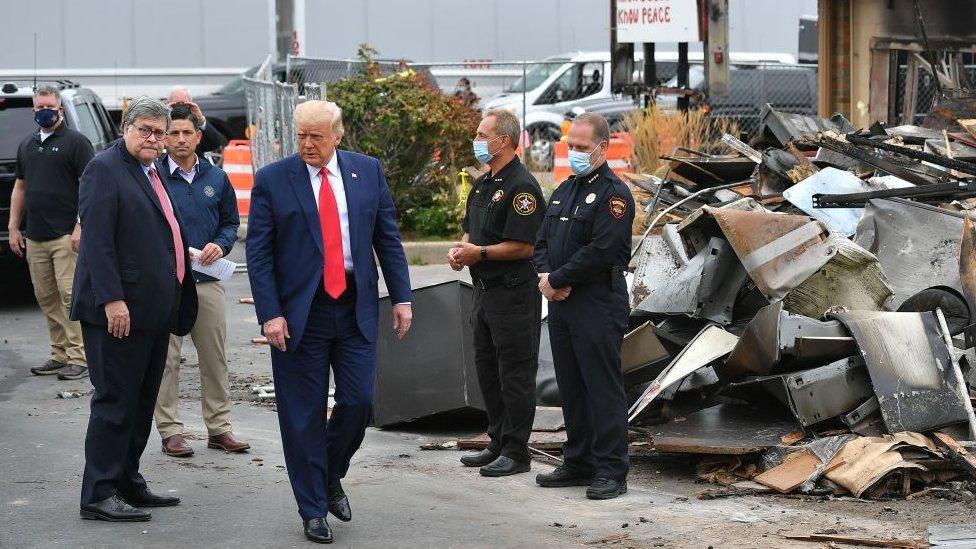
President Trump toured parts of Kenosha affected by unrest
Can presidents ever "federalise" the state guard? Yes, and it's happened before, albeit rarely.The guard was last controlled by a president during 1992's Rodney King riots.
How did they show empathy?
From his first remarks on Ferguson, Mr Obama called for calm without casting aside the "heartbreaking and tragic circumstances" that started the unrest.
"He was 18 years old," Mr Obama said of Michael Brown. "His family will never hold Michael in their arms again."
Later, the president also admitted his own shortcomings in the response, telling GQ magazine in 2015: "If I were to do it over again, there might be something I could say that would've crystallised it more effectively." There was a gap, he said, between the shooting and how quickly his administration could "pull together a police task force, recommendations".
Mr Trump remarked that the video of Blake's arrest was upsetting, though his response has favoured empathising with law enforcement more than protesters.
On 31 August, Mr Trump did say he spoke to the Blake family's pastor - a "wonderful man" - and conveyed his best regards to the family.
Reporting by Ritu Prasad
- Published22 April 2021
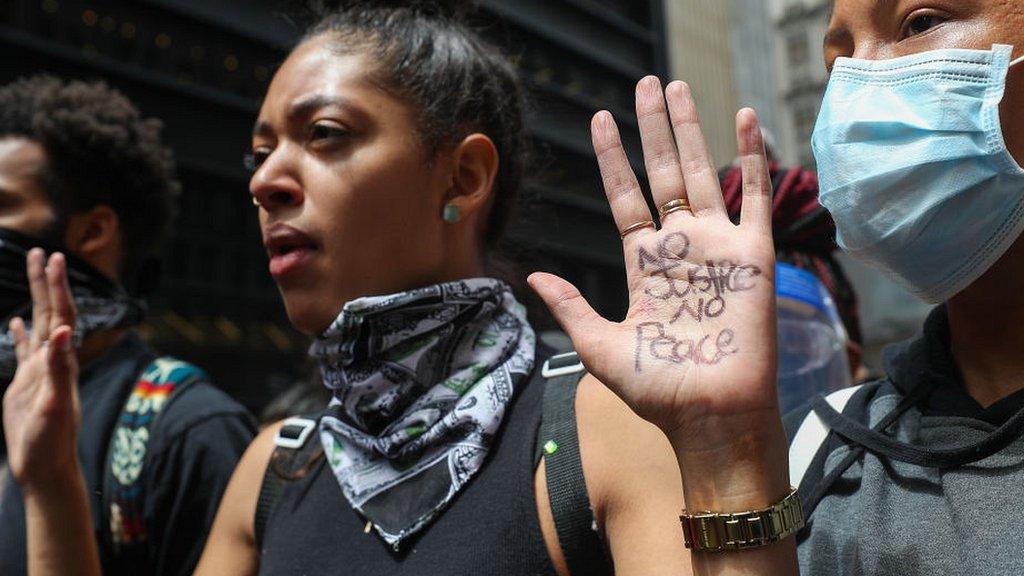
- Published28 August 2020
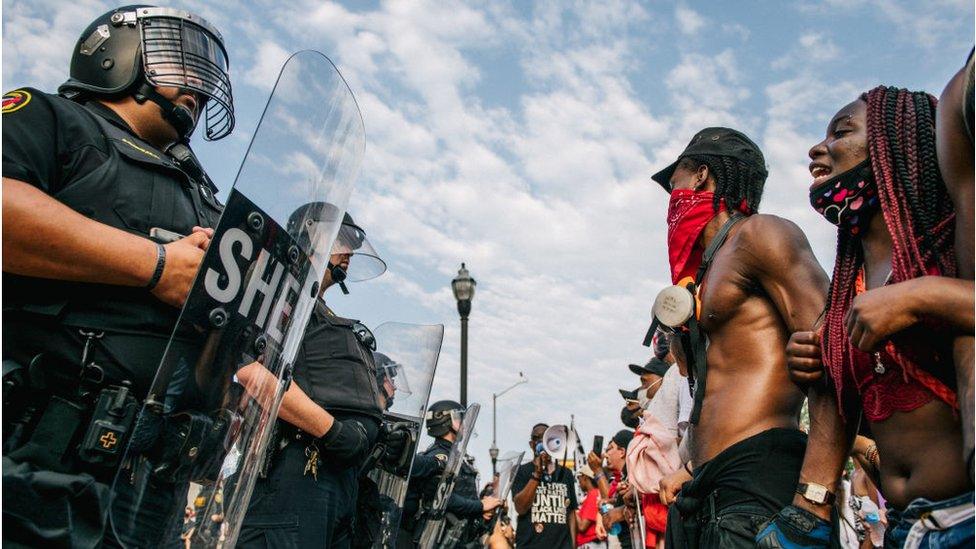
- Published25 November 2014
- Published17 June 2020

- Published10 August 2015
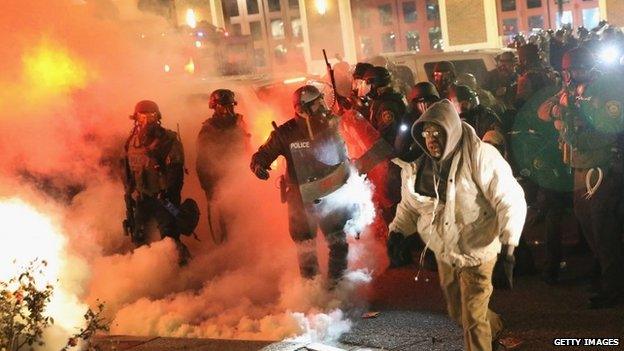
- Published21 April 2021

- Published31 August 2020
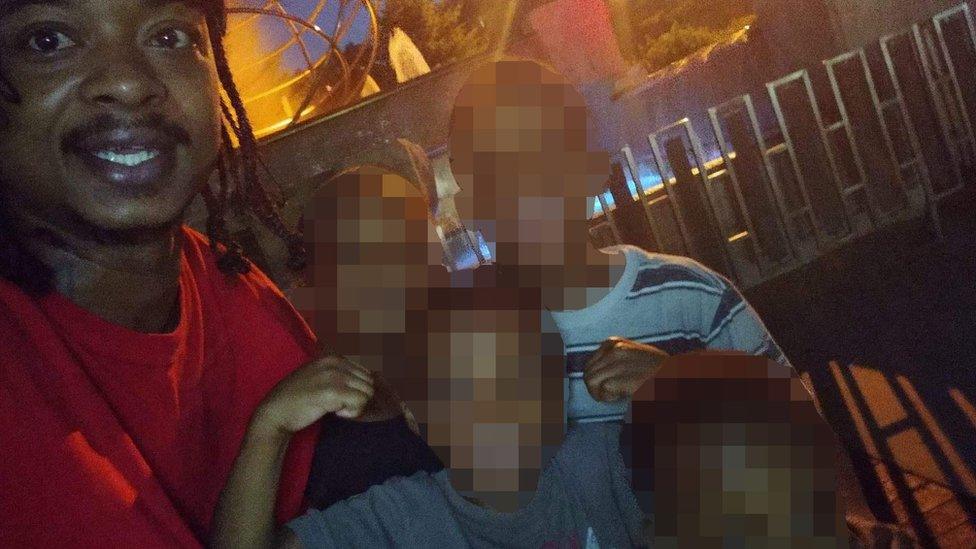
- Published22 August 2017
